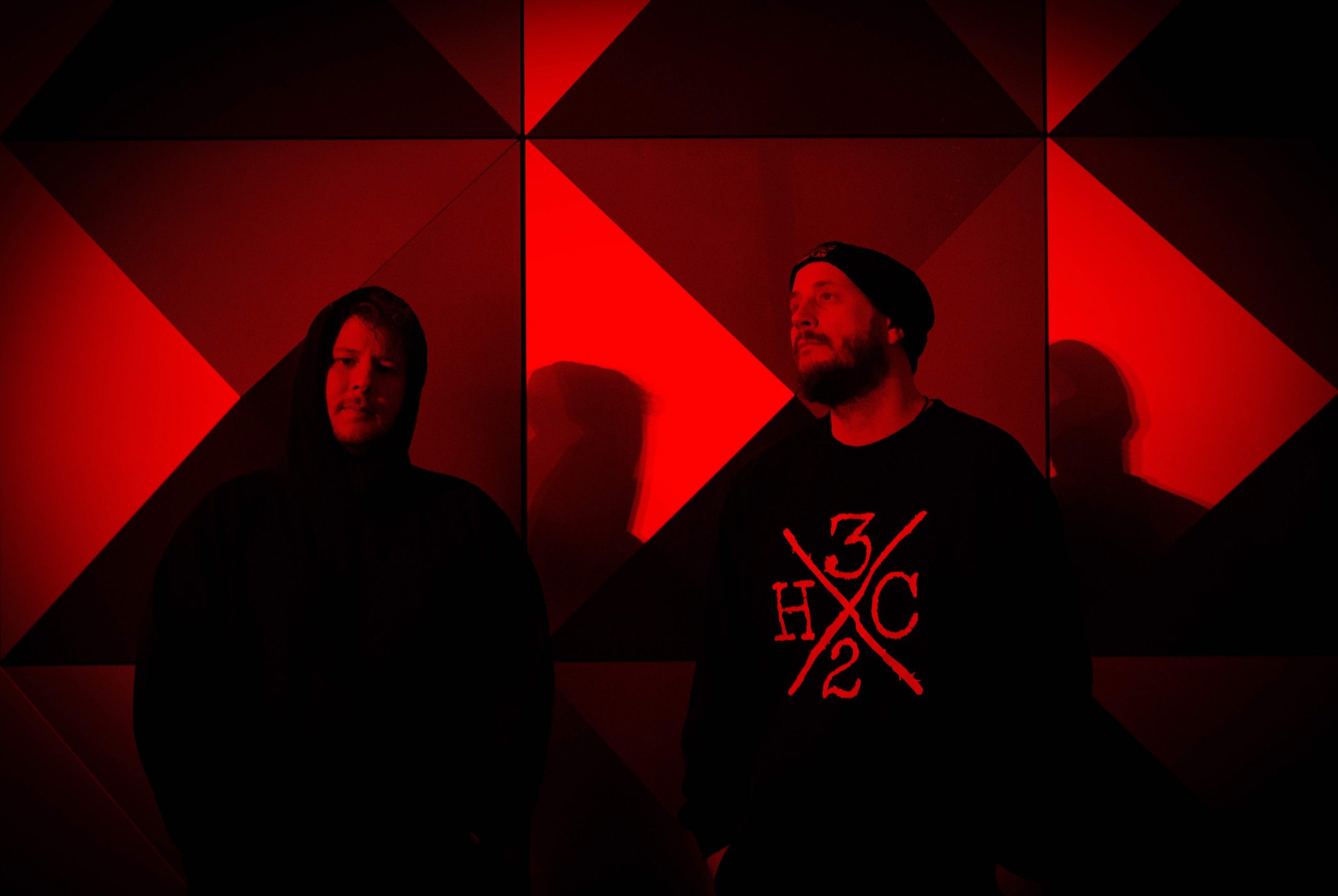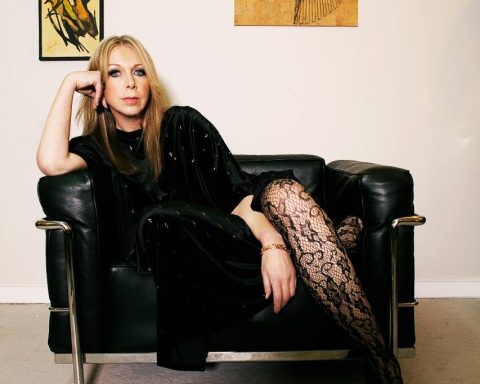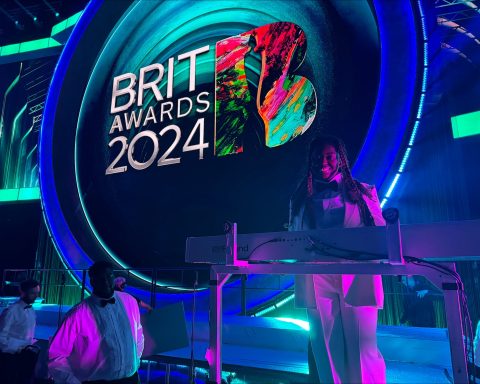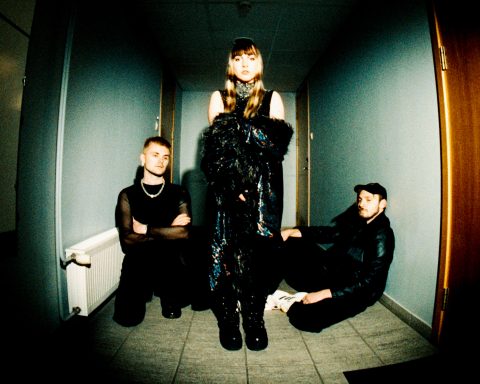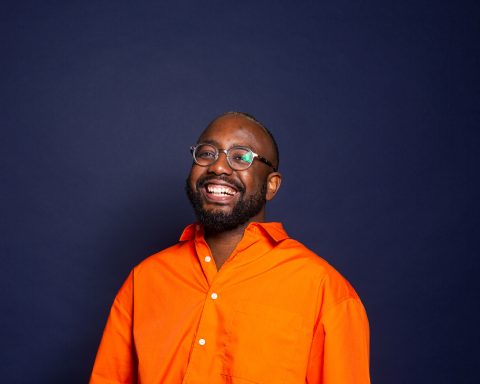The bond connecting Rasmus G. and Ketil G. Sejersen of Copenhagen, Denmark’s LLNN stretches back to their youth. The brothers at the heart of the brooding post-apocalyptic sci-fi metal act were avid gamers—a hobby that persists to this day. Little did the boys know they’d become partners in Gravitated Sound Studio, creating sound design and music aimed at the commercial and entertainment industries. Even more implausible would be the notion of collaborating on two musical projects. While supporting the third LLNN LP, Unmaker (Pelagic, 2021), they also helm John Cxnnor, a Massive-Attack style collective. Rasmus and Ketil discuss sound design, Roland gear, and some of the myths behind their moniker
Inventing a Genre
Sound design and synths are key to LLNN, making the band unique. What influenced this approach?
Rasmus G. Sejersen: I’m the big brother, and after years playing punk and metal and hardcore, I wanted to try something new. I wanted to connect cinematic sound design with dark metal music. I thought of my younger brother, a local DJ who produced electronic music. When got Ketil, we had to find a whole new expression and how to approach it.
Ketil G. Sejersen: It was quite challenging combining sci-fi ’80s scores with sludgy hardcore metal since we wanted to create an organic feel to it. On our first record, we spent five months of exploration to figure out the balance.
Rasmus: People put us in the metal bucket, but we are more like a hardcore band. We get our sort of inspiration from bands like Converge.
FANTOM Limbs
How do FANTOM and other Roland instruments play into LLNN?
Ketil: We collect a big part of our audio library through foley recordings. Afterward, we manipulate the raw sounds in the studio to become the eerie, sci-fi soundscapes we use in both John Cxnnor and LLNN. We decided to buy the FA-06 because of the sample pads, so we could perform these soundscapes live on stage.
From there we wanted even more creative freedom, so we bought the SP-404. That sparked a whole new synergy because I could play chords with the FA-06 while going nuts on the 404.
Since we love to manipulate every little aspect of sound, we considered further incorporating FANTOM into our workflow. With the amazing performance and sample control features that FANTOM delivers, we get the opportunity to take our sound studio live on stage on a whole new level. This can expand our sonic universe even further. Combining the hardware with the Roland Cloud, we have a galaxy of inspiration to explore.
"We dive into the sonic waves to extract the harmonies and rhythms of each particular sound. We've learned that a simple sound is very complex."
The band has some unorthodox methods of creating samples, correct?
Rasmus: We use a recorder with a Sennheiser microphone. Then we dive into the sonic waves to extract the harmonies and rhythms of each particular sound. We’ve learned that a simple sound is very complex.
Ketil: I have a good example. We created a whole library from one sound where we took a big hammer and smashed it through a keyboard. The hit, the debris, and the electronic parts flying around got captured by a high-sensitivity microphone. After diving into it, we had thousands and thousands of sounds.
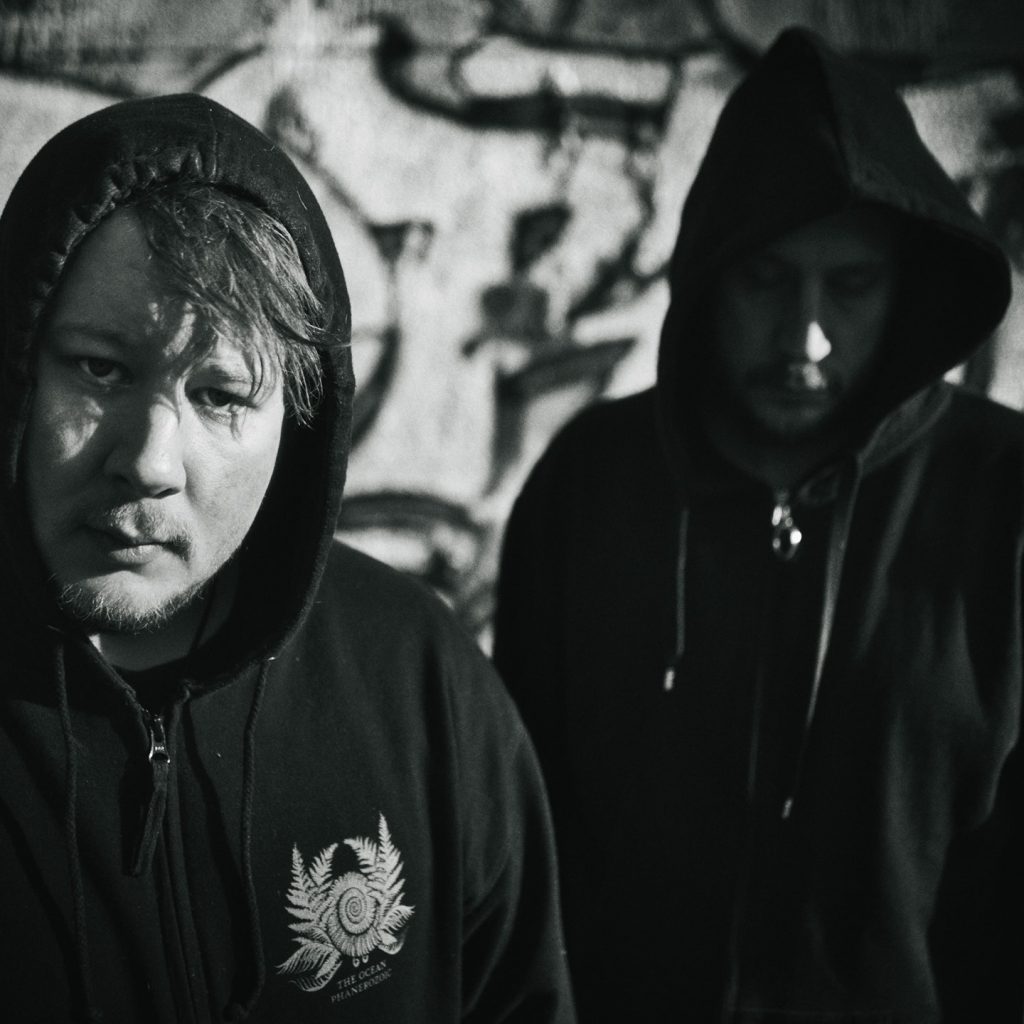
Game of Bros
In addition to LLNN, you are longtime gamers. As kids, did you dream of a space like your Gravitated Sound Studio?
Rasmus: I consider myself lucky to work with Ketil every day. There’s a special bond between us. We share the same mindset, yet we are very different. Our mom plays saxophone and our father played drums, so, music has been normal for us. We also game a lot together. When we’re on tour, we play using Nintendo Switch.
The music of LLNN is both cathartic and innovative. What drives the band?
Rasmus: The band is fueled by passion. And we’re basically super nerds trying to grasp how to make ultra-heavy sci-fi metal. We try to create interesting sounds with a sonic narrative, and it’s important for us to craft a lot of the sounds ourselves.
"The band is fueled by passion. We try and create interesting sounds with a sonic narrative."
Name Recognition
Tell us about the band name, LLNN.
Rasmus: We get that question a lot, so for the fun of it we’ve created a few different narratives. We’ll tell people it’s a reference to Flash Gordon where if you zoom in on one of the mountains he flies over, you’ll see rocks that read LLNN. Sometimes we also tell people it’s a code in early versions of the Doom game. In truth, we wanted a neutral name. LLNN means what people would like it to mean.
You’ve shared that LLNN will not create new music while you’re focused on shows. Is this typical?
Ketil: We like to feel the vibe of a new album and squeeze every bit of passion out of it. If we went out and wrote a new album every year, we’d need to find a new mindset.
Rasmus: The whole release phase is hard because we do a lot ourselves—the videos, artwork, and all of that. Then there’s the whole live period. At some point, it’s natural for us to want to write new music again.
Collaboration by Design
How did the collaborative John Cxnnor project happen?
Rasmus: It’s due to the whole pandemic lockdown. Suddenly, we had a lot of time, so we started building the song catalog. We’d been talking about forming an industrial electronic collective to do singles. John Cxnnor is a creative, fun platform where we can do whatever we want and don’t have to think about complex timelines, long-term label deals, or contracts.
One of the singles is with the dark folk singer, Dávid Makó (THE DEVIL’S TRADE) from Budapest. His label (Season Of Mist) released it earlier this year, and since then we’ve released a total of four singles. All of them have different vocalists and all of them are released by different record labels. The music videos we’ve produced ourselves.
"One of our methods from designing sound for games is how to randomize sound. We took that mindset to Unmaker."
Making the Unmaker
LLNN has been forging its path on releases like Deads and Loss. How would you characterize your latest album Unmaker?
Ketil: The sonic universe begins as very harsh and hardcore. It’s very eerie. Then we have bits where we milked that area into something more organic but still very upfront. We wanted to have this 5D experience, where you could smell the sounds and feel the heat from our recordings. We want to create that depth.
Rasmus: One of our methods from designing sound for games is how to randomize sound. Think about a situation where you have to approach a fire. That fire has a specific sound. Then, if you approach again, it needs to change to create a more realistic experience for the player. We took that mindset to Unmaker. Basically, this means that all the sound design on the album is unique, even though it may seem, or feel, similar.
Meta Moviemaking Magic
Rasmus, as a filmmaker, how did you create the “Desecrator” video?
Rasmus: I wanted to make a MTV Superock ‘90s -style video. The idea was me recording me, recording the band to create something meta. We wrote a lot of the album in the same room where we shot the video, so it’s an honest expression of where we recorded. Ketil filmed me playing. Every time the camera pans to me drumming, there is a fast pan.
There are two sides to LLNN. There’s the sci-fi theme, where people can dream and picture themselves on Mars while they listen. But, we’re also a hardcore band when people meet us. We like to drink beers and have fun. We’re four goofy leprechauns playing hardcore.

"There are two sides to LLNN. There’s the sci-fi theme, but we’re four goofy leprechauns playing hardcore."
How is Denmark for heavy music?
Rasmus: The last five years have been really good. A lot of the bands are going on tour and some are signing to labels. We have a lot of great venues that want to present this kind of music. Denmark is a small country of about six million people, but the scene is very healthy. We feel like we’re having our own party.

